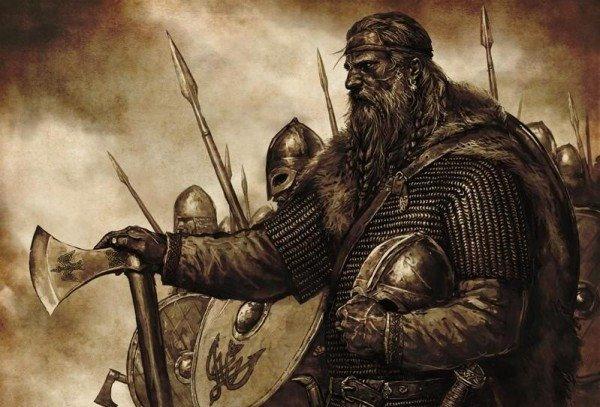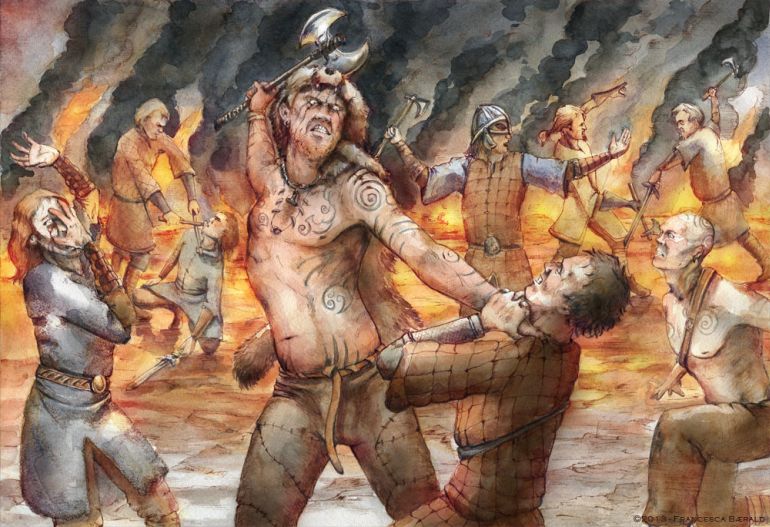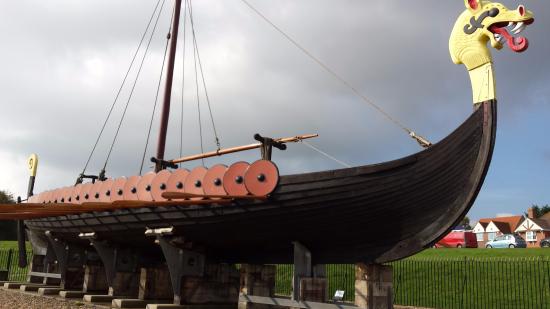Vikings were Norse seafarers, mainly speaking the Old Norse language, who during the late 8th to late 11th centuries, raided and traded from their Northern European homelands across wide areas of Europe, and explored westwards to Iceland, Greenland, and Vinland.

The period from the earliest recorded raids in the 790s until the Norman conquest of England in 1066 is commonly known as the Viking Age of Scandinavian history. The farthest reported records of Vikings were in Baghdad for the trading of goods like fur, tusks and seal fat.
While these people are often attributed as savages raiding the more civilized nations for treasure and women, the motives and culture of the Viking people are much more diverse. These raiders also facilitated many changes throughout the lands from economics to warfare.
Vikings Raid
A Viking raid on the monks of Lindisfarne, a small island located off the northeast coast of England, marked the start of the Viking migration from Scandinavia in 793. This location was a well-known abbey of learning, famous throughout the continent for the knowledgeable monks and its extensive library. During this raid, monks were killed, thrown into the sea or taken as slaves along with many treasures of the church, and the library itself razed. This single event set the stage for how Vikings would be perceived throughout the Viking Age: savage warriors with no respect for religion or appreciation for learning.

In the years that followed the initial raid, coastal villages, monasteries and even cities found themselves besieged by these sea-based foreign intruders. Due to the frequency of sea attacks, many developments were made in developing fortifications in the forms of walled-in harbors and sea-facing stone walls, defenses that proved to be quite effective at deterring raids.
The reason behind these attacks is a topic of debate among academics, though the reasons often stem from such things as the Christian persecution and forced baptism of pagans to reduced agricultural outputs in the Scandinavian region. Many more documented reasons might have prompted these people to leave their cold and harsh homes to seek out the means to survive elsewhere.
Yet, despite how unforgiving their homeland may have been, most Vikings still returned to their homeland at the end of each season with treasure, slaves and goods to survive yet another winter.
Vikings’ Ships
The Vikings’ ship-building craft reached a high point in the 7th century when they invented the keel, a structural beam that runs from the bow to the stern and sits lower than the main body of the ship. This feature increased speed and stability and prevented unwanted lateral movement, according to Yachting & Boating World.

By the middle of the 9th century, the raids really picked up as word spread across the Norse region of Europe’s removable wealth. Norse villages and communities came together to build ships with the intention of improving their lives through the business of raiding.
The Vikings paid as much attention to art as to craft. The longships were usually adorned with carved dragon heads at the bow, which were believed to keep evil spirits away. The dragon head coupled with a large square, red-striped sail would come to be known as the signature of the Vikings. The sight would strike fear into the hearts of Europeans for three centuries.
Vikings’ Site

At present the only confirmed Viking site in the New World is located at L’anse aux Meadows on the northern tip of Newfoundland. That site was excavated in the 1960s. Additionally there are three possible Viking sites that archaeologists have recently excavated in Canada. Two of the possible sites are located in Newfoundland while a third site is located on Baffin Island in the Canadian Arctic.
Source: https://www.livescience.com



Comment here